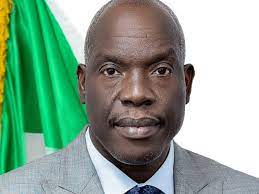…..Analysts Flaw Apex Bank’s Sustained Hawkish Policy Stance
The Central Bank of Nigeria (CBN) on Tuesday raised the monetary policy rate (MPR), the benchmark lending rate, by 400 basis points to a record 22.75%, from 18.75% at its last meeting, among other decisions taken at the end of its Monetary Policy Committee’s (MPC’s) two-day meeting in Abuja.
The committee’s , which was the first to be presided over by the new Central Bank Governor, Dr. Olayemi Cardoso, since he assumed office in October last year also jerked up the CRR to 45% which at the previous level of 32.5% and Liquidity Ratio to 30%.
Justifying the decision of the Committee during its post-meeting media briefing in Abuja, Cardoso said MPC members were concerned about the persistent rise in the level of inflation and emphasized the commitment to reverse the trend.
He explained: “Previous policy rate hikes have slowed the rise in inflationary pressure but not to a desirable extent. Members concluded that inflation could pose more regulatory challenges in the near and medium term if not effectively anchored.”
According to him, the committee observed that non-monetary factors are partly responsible for the surging inflation rates in recent years.
However, some analysts have expressed concerns about the margin of the MPR hike by 400% basis points in view of the likely multiplier effects on economic activities in the country.
Reacting to the latest decisions of the apex bank in a Note circulated to our correspondent, economists at Comercio Partners, predicted that the CBN’s decision which hiked the benchmark lending interest rate by 400bps to 22.75%, was expected to cause increased strain on the economy, especially businesses.
The experts noted that the country, despite its resilience, might not have enough room to contain the latest hike in interest rates.
The analysts cautioned: “The economy, which currently faces a series of fluctuating social and economic challenges, may be pushed further into devastation as an increase in the minimum cost of borrowing in the economy may likely cause a slowdown in the corporate sector, leading to a decline in the stock market.
“Also, with this move, it is expected that the fixed-income space may see a sell-off as an increased interest rate makes old fixed-income securities unattractive, causing a fall in their prices and accompanied by increased yield. It is also expected that new issues both in the public and private spaces will attract higher yields.
“Lastly, on the macroeconomic front, despite the increased interest rate likely to cause a slowdown in GDP growth and stock appreciation, the move may exacerbate the unemployment issue confronting the Nigerian economy. Although doubtful, we may see some degree of easing in the inflation figures before the end of the year”, the Comercio Partners’ financial experts added.
Also, another analyst, Prof. Uche Uwaleke, pointed out that jerking up the MPR by 400 basis points in one fell swoop was simply an overkill.
He noted that the committee did not just stop at raising the MPR but also jerked up the CRR to 45% which at the previous level of 32.5% was among the highest in Sub Saharan Africa.
Speaking on the implications of the MPC’s policy decisions, Uwaleke, who is a Professor of Finance and Capital market at Nasarawa State University, Keffi, expressed his concern for the real sector of the economy, stressing that “the implication is that for every deposit in the bank, CRR takes 45% of it while Liquidity Ratio takes 30%. So it is only 25% of the deposit that banks can lend.”
According to him, this has negative implications for access to credit, cost of capital for firms, cost of debt service by the government and asset quality of banks as banks will re-price their loans with negative consequences for non-performing loans and financial soundness indicators.
He projected: “So, expect lower GDP numbers, especially from Agriculture and Industry sectors as well as a surge in unemployment levels.”




